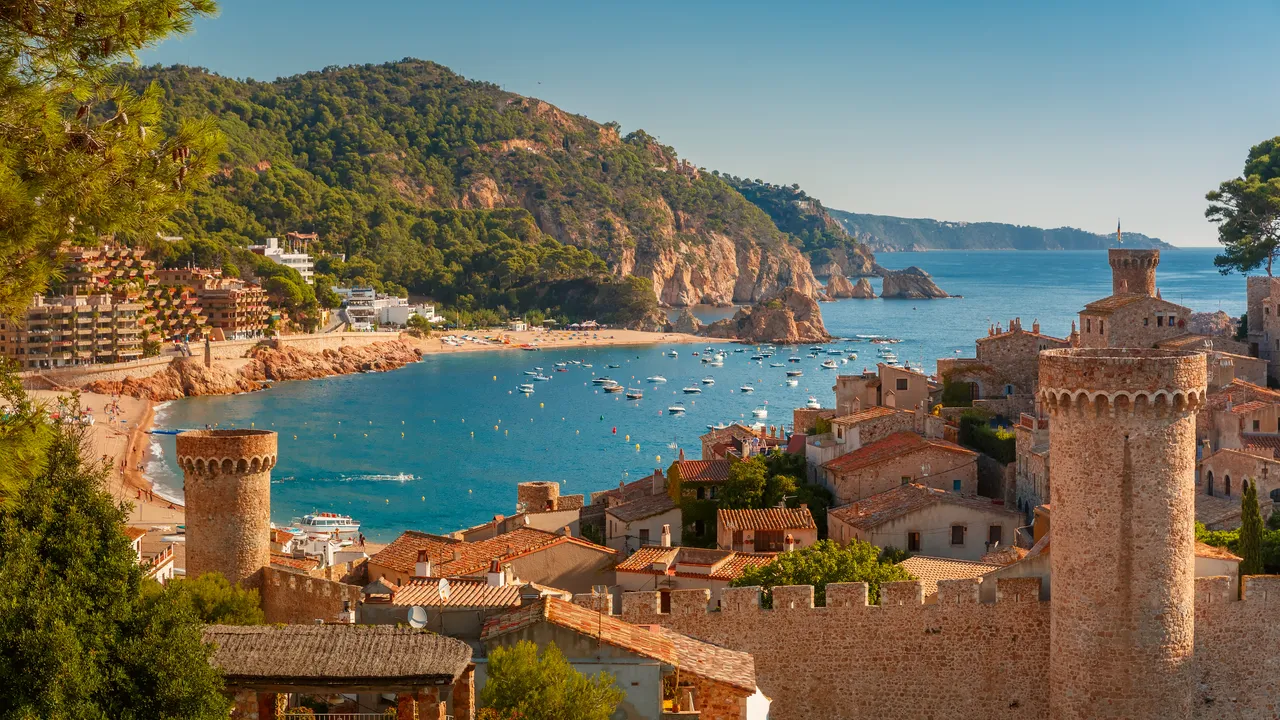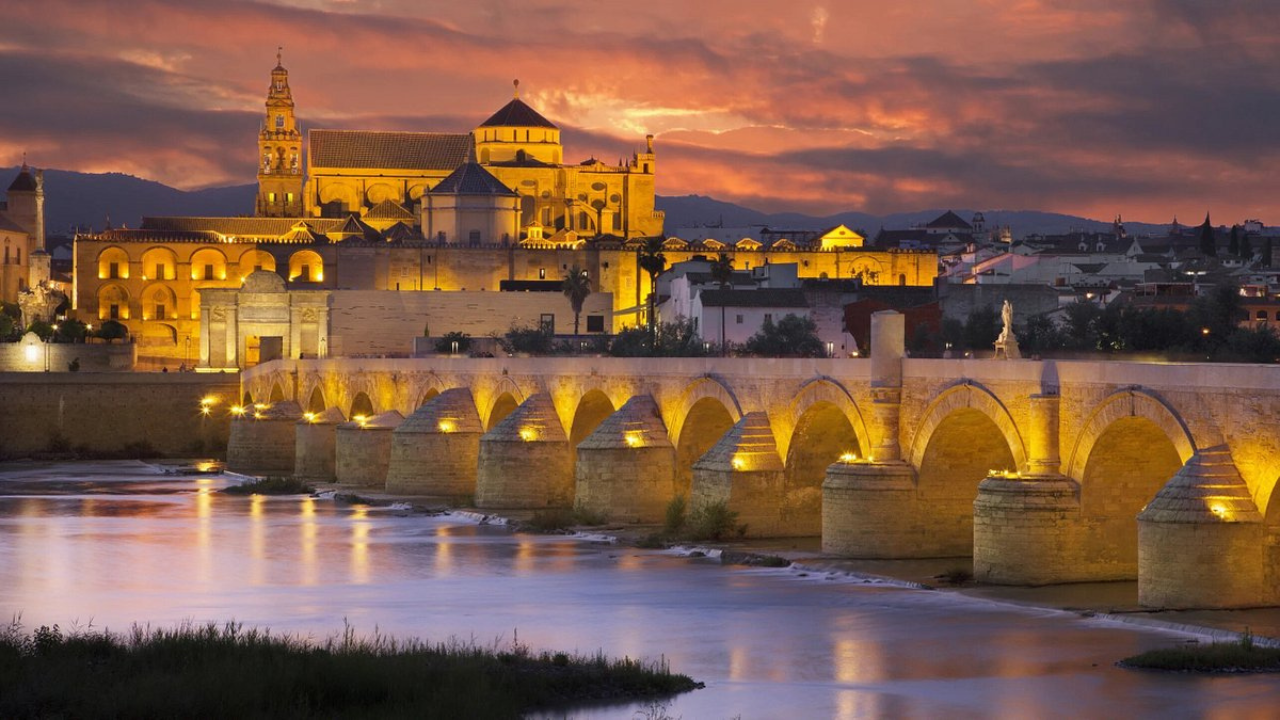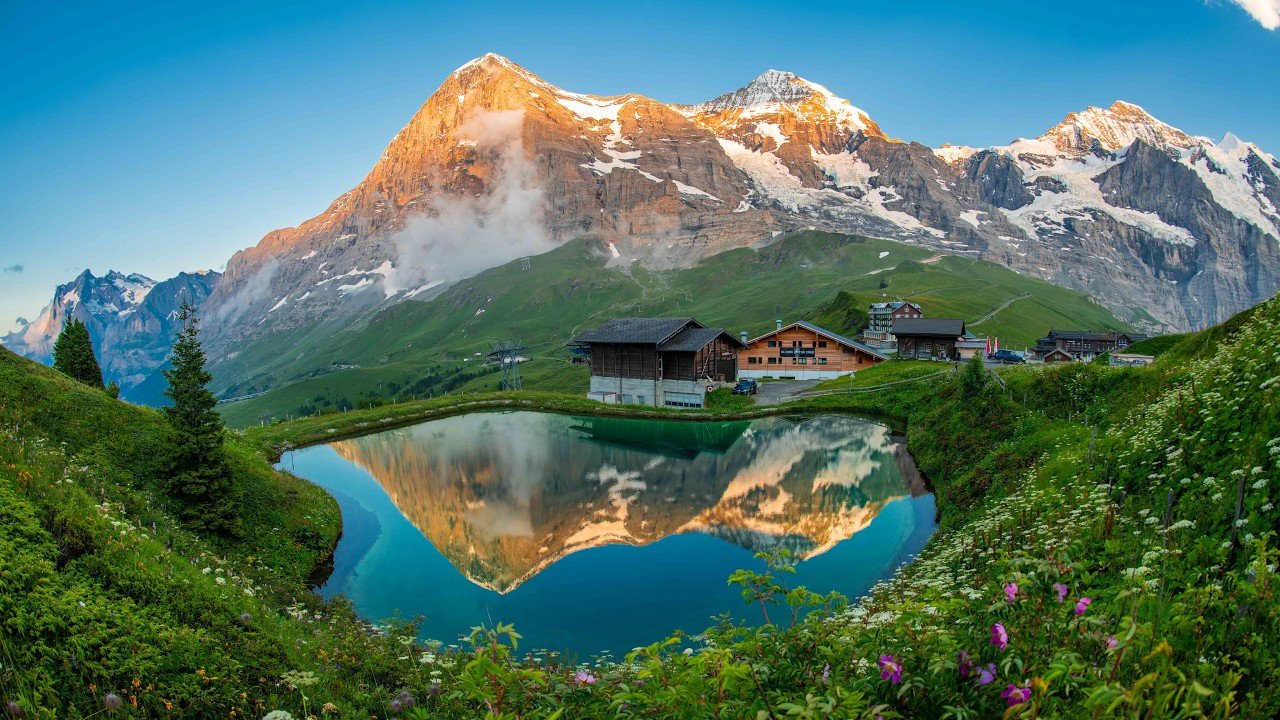Introduction
Andalucía, the sun-soaked soul of southern Spain, is a region where history, culture, and natural beauty intertwine. Spanning eight provinces—Seville, Málaga, Cádiz, Córdoba, Granada, Almería, Huelva, and Jaén—it boasts a rich Moorish legacy, vibrant flamenco rhythms, and landscapes ranging from golden beaches to rugged mountains. With over 500 miles of coastline and a heritage shaped by Romans, Moors, and Catholic monarchs, Andalucía attracts 30 million visitors annually, drawn to its iconic landmarks and hidden gems. This guide, inspired by travel experts, highlights 15 must-visit places in Andalucía for 2025, offering a blend of historic cities, charming villages, and breathtaking natural sites. Whether you’re chasing tapas, flamenco, or scenic hikes, Andalucía promises an unforgettable journey.
1. Seville: The Heart of Andalucía
Seville, the region’s capital, is a vibrant city steeped in history. The Seville Cathedral, a UNESCO World Heritage Site and the largest Gothic church in the world, houses the tomb of Christopher Columbus and the Giralda, a former minaret turned bell tower with panoramic views. Nearby, the Royal Alcázar, a stunning Moorish palace, dazzles with its intricate tiles and lush gardens. Wander the Santa Cruz neighborhood’s cobblestone streets or marvel at Plaza de España’s tiled alcoves and canal. Don’t miss the Feria de Abril in April 2025 for flamenco and festivities. Book Alcázar tickets online to avoid lines.
2. Granada: The Alhambra’s Majesty
Granada’s Alhambra, a UNESCO World Heritage Site, is Spain’s most visited monument, blending Moorish palaces, Renaissance elements, and the Generalife gardens’ fountains. The Nasrid Palaces’ intricate stucco work and the Alcazaba fortress captivate visitors. Explore the Albaicín district’s whitewashed alleys for views of the Alhambra against the Sierra Nevada. Visit in spring for fewer crowds, and book tickets in advance via alhambra-patronato.es, as only 6,600 daily visitors are allowed. Evening tapas crawls in Albaicín offer free bites with drinks, a Granada tradition.
3. Córdoba: The Mezquita’s Timeless Beauty
Córdoba’s Mosque-Cathedral (Mezquita), a UNESCO site, is a masterpiece of Islamic architecture with its red-and-white arches and a Renaissance cathedral at its core. The historic Jewish quarter, with its flower-filled patios, and the Roman Bridge add charm. Visit the Alcázar de los Reyes Cristianos for its gardens and Mudejar-style rooms. May’s Patio Festival showcases Córdoba’s courtyard culture. Book Mezquita guided tours at mezquita-catedraldecordoba.es for deeper insights. Spring or fall visits avoid summer heat.
4. Ronda: The Gorge-Split Town
Perched above the El Tajo Gorge, Ronda’s dramatic setting and Puente Nuevo bridge make it a photographer’s dream. The old town, La Ciudad, reflects its Moorish roots with sites like the Arab Baths and Casa del Rey Moro’s gardens. Ronda’s Plaza de Toros, Spain’s oldest bullring, hosts the Goyesque bullfight during September’s Feria de Pedro Romero. Hike into the gorge for stunning views, but wear sturdy shoes. Ronda is a 90-minute drive from Málaga, ideal for a day trip.
5. Málaga: The Costa del Sol’s Cultural Hub
Málaga, the birthplace of Picasso, blends coastal charm with cultural depth. The Alcazaba, a 10th-century Moorish fortress, offers city views, while the adjacent Gibralfaro Castle provides sweeping panoramas. Visit the Picasso Museum and Carmen Thyssen Museum for art, or stroll Calle Larios for shopping. Málaga’s beaches, like La Malagueta, are perfect for relaxation. Free entry to the Alcazaba on Sundays after 2 pm. Summer festivals, like the Feria de Málaga, light up August.
6. Cádiz: The Coastal Gem
Cádiz, one of Europe’s oldest cities, sits on a peninsula with a baroque-neoclassical cathedral and over 100 watchtowers, including Torre Tavira. The historic old town, with its narrow streets, buzzes with tapas bars. La Caleta Beach and the Campo del Sur promenade offer seaside charm. February’s Cádiz Carnival, with its colorful costumes and satire, is a 2025 highlight. Take a sunset walk along the seafront for unforgettable views.
7. Frigiliana: The Whitewashed Village
Nestled in the Sierras de Tejeda, Frigiliana is one of Spain’s most picturesque pueblos blancos. Its Mudejar-style historic center features cobblestone lanes, whitewashed houses, and vibrant flower pots. Explore the 17th-century San Antonio Church or hike nearby trails for coastal views. August’s Festival of Three Cultures celebrates Frigiliana’s Christian, Muslim, and Jewish heritage. A 20-minute drive from Nerja, it’s perfect for a half-day visit.
8. Marbella: The Golden Mile
Marbella’s Golden Mile, stretching from the city to Puerto Banús, is a glamorous beachfront lined with resorts and chiringuitos. The old town’s whitewashed streets and Plaza de los Naranjos offer tapas and history. Visit Puerto Banús for yacht-spotting or hike La Concha Mountain for views. Marbella’s mild winters make it a year-round destination, but book summer accommodations early via discovercars.com for deals.
9. Nerja: The Coastal Escape
Nerja, on the Costa del Sol, is famed for its Caves of Nerja, a 4-km network of stalactite-filled caverns hosting summer concerts. Balcón de Europa offers stunning sea views, while Burriana Beach is great for kayaking. Nerja’s laid-back vibe and proximity to Frigiliana make it a perfect base. Visit in spring for pleasant weather and fewer crowds.
10. Jerez de la Frontera: Sherry and Horses
Jerez is the heart of sherry wine production and Andalusian equestrian culture. Tour bodegas like Tío Pepe for tastings or visit the Royal Andalusian School of Equestrian Art for horse shows. The Alcázar of Jerez, with its 12th-century mosque, adds historical depth. May’s Feria del Caballo is a vibrant festival. Book bodega tours at jerez.es for an authentic experience.
11. Cabo de Gata-Níjar Natural Park
This UNESCO Biosphere Reserve in Almería features Europe’s only desert-like coastline, with volcanic rock formations and pristine beaches like Playa de Mónsul. Hike or kayak to explore coves and fishing villages. Birdwatchers can spot flamingos at Las Salinas. Visit in spring or fall to avoid summer heat, and book guided tours through cabodegata-nijar.es.
12. Caminito del Rey: The Daring Hike
Known as Spain’s most thrilling hike, Caminito del Rey is a 7.7-km path along a narrow walkway pinned to cliffs in the El Chorro Gorge. Reopened in 2015, it offers dizzying views of the Guadalhorce River. Tickets cost €10–18 and sell out fast; book at caminitodelrey.info. Wear comfortable shoes and visit in spring for cooler temperatures.
13. Carmona: The Historic Hilltop
Carmona’s Roman necropolis, with 300+ tombs from 1 AD, and the 14th-century Parador, a former Moorish fortress, highlight its history. The neoclassical Plaza de Abastos hosts local markets. A 20-minute bus ride from Seville, Carmona is ideal for a day trip. Explore its cobblestone streets for a taste of Andalusian charm.
14. Fuente de Piedra: Flamingo Haven
This protected lagoon near Antequera is Spain’s prime spot for pink flamingos, with up to 15,000 chicks born annually. Visit in May to see fledglings, using free binoculars from the visitor center. Guided tours offer insights into the 150+ bird species. A 90-minute drive from Málaga, it’s a must for nature lovers.
15. Cazorla: The Mountain Village
In the Sierras de Cazorla, Segura, and Las Villas National Park, Cazorla blends whitewashed houses with a 12th-century castle and scenic olive groves. Hike the Río Borosa trail or visit the Yedra Castle museum. Spring and fall are ideal for outdoor activities. Book accommodations at campingcortijo.com for a nature-immersed stay.
Practical Tips for Visiting Andalucía in 2025
- Best Time to Visit: March to May and September to November offer mild weather (15–25°C) and fewer crowds. Summer (June–August) is hot, exceeding 35°C, but ideal for beaches. Winter is mild on the coast but cold in the mountains.
- Getting Around: Spain’s Renfe trains connect major cities like Seville, Granada, and Córdoba (e.g., Seville to Córdoba in 45 minutes, €15). Buses serve smaller towns, costing €1–5. Rent a car via discovercars.com for rural areas like Ronda or Cazorla, but note narrow village roads. Uber operates in Seville and Málaga.
- Safety: Andalucía is safe, with low crime rates. Avoid pickpockets in crowded areas like Seville’s Santa Cruz. Respect siesta hours (2–5 pm) when shops may close.
- Cultural Etiquette: Dress modestly in religious sites like the Mezquita or Seville Cathedral. Tipping 5–10% in restaurants is appreciated but not mandatory. Try tapas culture—order drinks to get free small plates in Granada.
- Budget Tips: Book Alhambra and Caminito del Rey tickets months in advance. Use the Andalusia Pass for discounted entry to multiple sites. Stay in paradores (historic hotels) for unique, mid-range lodging. Check visit-andalucia.com for deals.
- Visa Requirements: EU citizens need no visa. Most non-EU visitors, including U.S. citizens, get a 90-day visa-free stay under Schengen rules. Check Spain’s Ministry of Foreign Affairs for updates.
Why Andalucía in 2025?
Andalucía’s allure lies in its diversity—where else can you explore a Moorish palace, hike a cliffside path, and sip sherry in a single trip? As travel expert Paul Healy notes, “Andalucía’s intrigue extends beyond its beaches to its historic cities and mountain villages”. From Seville’s flamenco to Cazorla’s wild trails, the region offers something for every traveler. Its 800-year Moorish legacy, seen in the Alhambra and Mezquita, blends seamlessly with modern vibrancy, like Málaga’s art scene. Sustainable tourism initiatives, such as Cabo de Gata’s conservation efforts, ensure its beauty endures.
Conclusion
Andalucía in 2025 is a tapestry of history, culture, and natural splendor. These 15 destinations—from the Alhambra’s grandeur to Frigiliana’s quaint charm—capture the region’s essence. Whether you’re wandering Seville’s plazas, hiking the Caminito del Rey, or spotting flamingos in Fuente de Piedra, Andalucía invites you to immerse yourself in its passion and beauty. Book early, embrace the tapas culture, and let southern Spain’s magic unfold.




